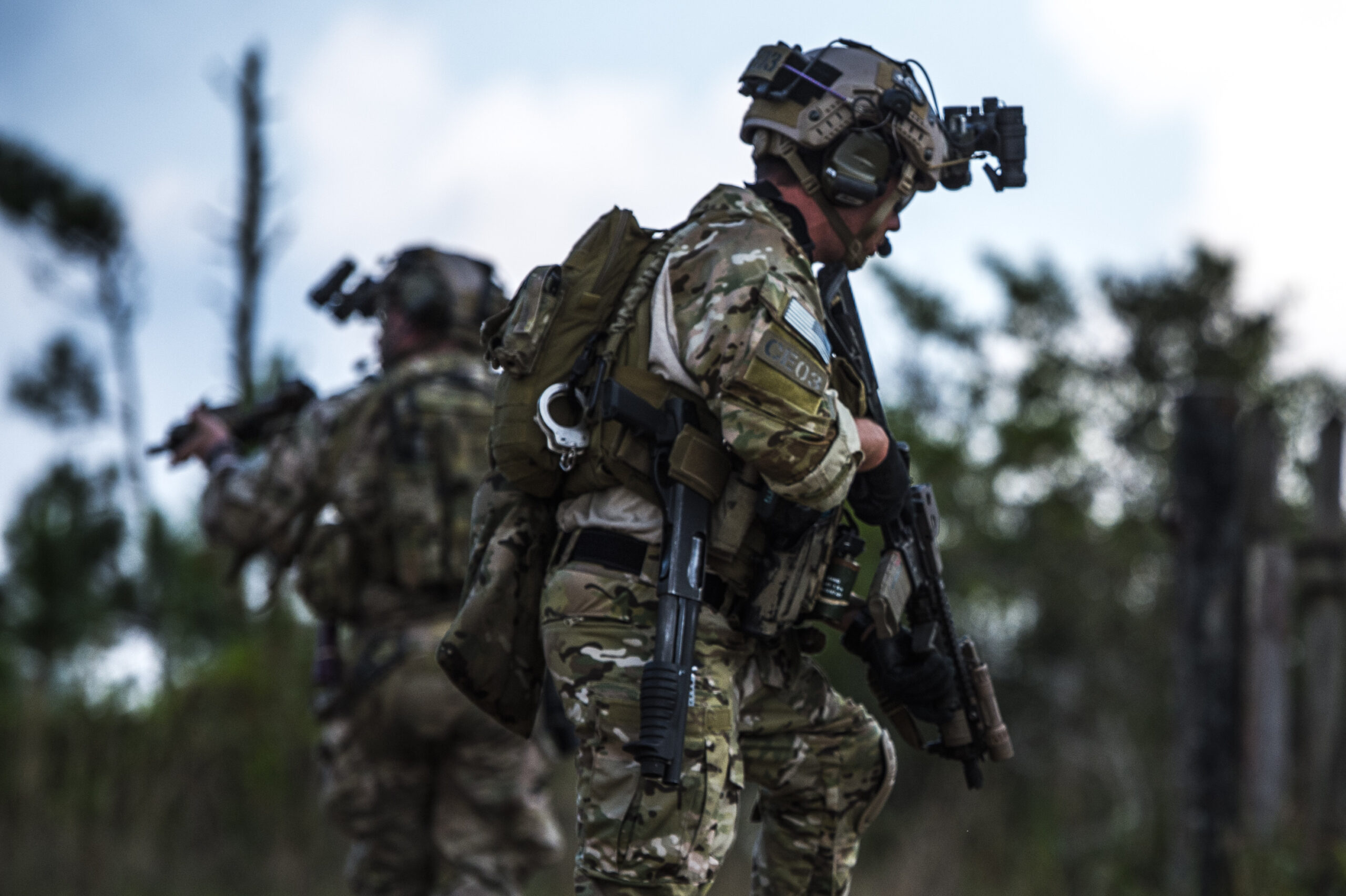U.S. Special Forces Soldiers search a compound while on a mission as part of Fused Response 2014
Despite opposition from key figures within the special operations forces (SOF) community and members of Congress, the Army is set to reduce its SOF personnel by as many as 3,000 positions.
Addressing the issue at the National Defense Industrial Association’s 34th annual symposium, Chris Maier, the assistant secretary of defense for special operations and low-intensity conflict, acknowledged the Army’s challenging situation, marked by recruitment difficulties and the need to adapt to evolving combat scenarios. As a result, the Army has proposed cuts to its SOF units.
A report from Army Times in mid-October indicated that a substantial portion of these cuts would affect vacant positions within the U.S. Army Special Operations Command, potentially eliminating up to 10% of the command’s workforce.
The reductions are expected to primarily affect support and enabling roles, such as logistics, civil affairs, and psychological operations, rather than traditional operators. Nevertheless, this decision has sparked concern among SOF leaders and supporters.
Maier emphasized the crucial role played by enablers in both current and future operations, highlighting their significance in countering sophisticated information operations, psychological warfare, and civil affairs requirements when confronting peer adversaries like the Russian and Chinese military.
The rationale for these SOF cuts appears to stem from a limited perspective on the force’s past accomplishments and future capabilities. Some officials view SOF as having a singular focus on counterterrorism, which may have contributed to the belief that downsizing the force is a cost-saving and manpower-conservation measure, especially given the Army’s recent recruitment challenges.
However, some experts, including retired Army Lt. Gen. Ken Tovo, a former USASOC commander, argue that SOF’s role extends far beyond counterterrorism. Tovo pointed to the force’s involvement in various missions, such as developing special operations and crisis response units in Iraq, supporting training partnerships in the Baltic states and Ukraine, and building partner forces in Central and South America.
While some of the cut positions may remain vacant due to difficulties in recruitment, Maier noted that this can lead to a self-defeating cycle. Positions that aren’t filled may become less of a priority, ultimately affecting the Army’s ability to project power in the future.
The collaboration between conventional forces and SOF is critical, involving joint planning, exercises, training, and deployment. SOF’s contributions often occur before the actual combat, as they establish partnerships and access to regions that conventional forces may later require.
To address these challenges and adapt to evolving threats, the Special Operations/Low-Intensity Conflict office is working on a SOF Operating Concept 2040, which will outline the force’s requirements based on anticipated risks, threats, and adversaries over the next 15 years. Additionally, the office is conducting a capabilities gap assessment to identify where special operations should develop specific capabilities for future conflicts, potentially emphasizing cyber and psychological operations. Following these reviews, an “organizational redesign” will consider the Department of Defense’s strategic needs for using SOF in areas like strategic competition, counterterrorism, and crisis response.
*The views and opinions expressed on this website are solely those of the original authors and contributors. These views and opinions do not necessarily represent those of Spotter Up Magazine, the administrative staff, and/or any/all contributors to this site.
SOURCE
https://www.armytimes.com/

